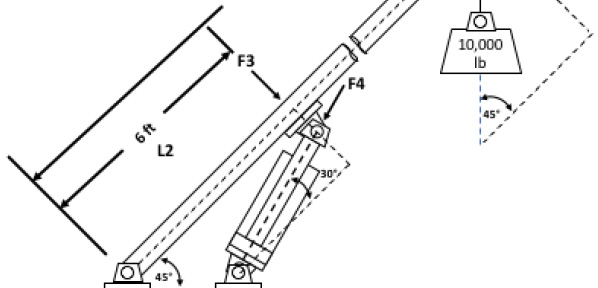The 5 Most Important Lean Manufacturing Metrics
 From Freedom, the Smart Manufacturing Platform
From Freedom, the Smart Manufacturing Platform
This article looks at the most important manufacturing key performance indicators (KPIs), what lean manufacturing is, and why the indicators are important to improving your operation.
What are the top manufacturing KPIs?
- Improve customer experience
- Increase responsiveness
- Improve quality
- Improve efficiency
- Reduce inventory
- Ensure compliance
- Reduce maintenance
- Improve flexibility
- Reduce costs and increase profitability
What is lean manufacturing?
Lean manufacturing strives to boost customer value by improving efficiencies and reducing waste across operations. Moving toward lean manufacturing requires more effective management of materials, human resources, and energy. Compiling and analyzing the right data is crucial to the success of lean manufacturing.
One of the most common problems that companies face when shifting to lean manufacturing is tracking the wrong KPIs. Most companies focus on traditional accounting principles, such as standard labor costs or machine drivers, which only inform traditional – rather than lean – results. To achieve operational success through smart lean manufacturing decisions, companies must review lean-focused KPIs.
There are a number of different metrics that are valuable for specific jobs or roles. Organizations often rely on various process and performance metrics to ensure that the company’s objectives are being met.
In order to ensure that effective metrics are in place to measure the performance of your business, implement goals that are SMART: specific, measurable, actionable, realistic, and time-bound.
Which manufacturing KPIs matter most?
The Manufacturing Enterprise Solutions Association sponsored research over the past few years to help the manufacturing marketplace identify the most important metrics and to help decision makers understand metrics improvements and their relationships to metrics programs and the use of software solutions.
As part of the most recent metrics survey, 28 manufacturing metrics were identified as being the most utilized by discrete, process, and hybrid/batch manufacturers.
These metrics have been grouped below with an associated top-level area of improvement/goal for each.
Improving customer experience and responsiveness
- On-time delivery to commit. This metric is the percentage of time that manufacturing delivers a completed product on the schedule that was committed to customers.
- Total cycle time. TCT calculates how long it takes to perform one repetition of any particular task or production of one part. Commonly referred to as “start to start,” this calculation can help minimize downtime and maximize productivity. Examining TCT is a critical step in measuring manufacturing performance and matching supply with demand, a necessity for avoiding inventory shortfalls or excess.
- Time to make changeovers. Measures the speed or time it takes to switch from making one product to making a different product in a manufacturing line or plant.
Improving quality
- Yield. Indicates a percentage of products that are manufactured correctly and to specifications the first time through the manufacturing process without scrap or rework.
- Customer rejects/return material authorizations/returns. A measure of how many times customers reject products or request returns of products based on receipt of a bad or out-of-specification product.
- Supplier’s quality incoming. A measure of the percentage of good quality materials coming into the manufacturing process from a given supplier.
Improving efficiency
- Throughput. Measures how much product is being produced on a machine, line, unit, or plant over a specified period of time.
- Capacity utilization. Indicates how much of the total manufacturing output capacity is being utilized at a given point in time.
- Overall equipment effectiveness (OEE). This multidimensional metric is a multiplier of Availability x Performance x Quality, and it can be used to indicate the overall effectiveness of a piece of production equipment or an entire production line.
- Schedule or production attainment. A measure of the percentage of time a target level of production is attained within a specified schedule of time.
Reducing inventory
- WIP inventory/turns. A commonly used ratio calculation to measure the efficient use of inventory materials. It is calculated by dividing the cost of goods sold by average inventory used to produce those goods.
Ensuring compliance
- Reportable health and safety incidents. A measure of the number of health and safety incidents that were either actual incidents or near misses that were recorded as occurring over a period of time.
- Reportable environmental incidents. A measure of the number of health and safety incidents that were recorded as occurring over a period of time.
- Number of noncompliance events/year. A measure of the number of times a plant or facility operated outside the guidelines of normal regulatory compliance rules over a one-year period. These noncompliances need to be fully documented as to the specific noncompliance time, reasons, and resolutions.
Reducing maintenance
- Percentage of planned vs. emergency maintenance work orders. This ratio metric is an indicator of how often scheduled maintenance takes place versus more disruptive unplanned maintenance.
- Downtime in proportion to operating time. This ratio of downtime to operating time is a direct indicator of asset availability for production.
Increasing flexibility and innovation
- Rate of new product introduction. Indicates how rapidly new products can be introduced to the marketplace and typically includes a combination of design, development, and manufacturing ramp-up times.
- Engineering change order cycle time. A measure of how rapidly design changes or modifications to existing products can be implemented all the way through documentation processes and volume production.
Reducing costs and increasing profitability
- Total manufacturing cost per unit excluding materials. This is a measure of all potentially controllable manufacturing costs that go into the production of a given manufactured unit, item, or volume.
- Manufacturing cost as a percentage of revenue. A ratio of total manufacturing costs to the overall revenues produced by a manufacturing plant or business unit.
- Net operating profit. Measures the financial profitability for all investors/shareholders/debt holders, either before or after taxes, for a manufacturing plant or business unit.
- Productivity in revenue per employee. This is a measure of how much revenue is generated by a plant, business unit, or company, divided by the number of employees.
- Average unit contribution margin. This metric is calculated as a ratio of the profit margin that is generated by a manufacturing plant or business unit, divided into a given unit or volume of production.
- Return on assets/return on net assets. A measure of financial performance calculated by dividing the net income from a manufacturing plant or business unit by the value of fixed assets and working capital deployed.
- Energy cost per unit. A measure of the cost of energy (electricity, steam, oil, gas, etc.) required to produce a specific unit or volume of production.
- Cash-to-cash cycle time. This metric is the duration between the purchase of a manufacturing plant or business-unit’s inventory and the collection of payments/accounts receivable for the sale of products that utilize that inventory, typically measured in days.
- EBITDA. This metric acronym stands for earnings before interest, taxes, depreciation, and amortization. It is a calculation of earnings before subtracting interest payments, tax, depreciation, and amortization for final accounting of income and expenses. EBITDA is typically used as top-level indication of the current operational profitability of a business.
- Safety. Keeping employees safe is vital to increasing production and lowering costs. Systematically incorporating safety measures into production and shop-floor processes is an integral part of lean manufacturing. From ensuring clutter-free floor spaces, to integrating safety inspections into daily activities and audits, to eliminating extra inventory to maximize space, incorporating safety measures into lean processes helps to save time, money, and resources.
When examining or incorporating any of the metrics above, it is essential that one step not degrade the performance of the other. When transitioning to lean manufacturing, the goal is to aggregate data, shift processes, and make changes that seamlessly function to serve increased efficiency, productivity, reduced waste, and lower costs.
The FREEDOM smart manufacturing production management software is a suite of data reporting platforms that provide real-time metrics from any industrial asset on the plant floor. Providing 24/7 access to utilization, availability, performance, quality, and OEE reports. The software helps to dramatically increase manufacturing efficiency – serving any of your lean manufacturing goals.
For more information, visit https://freedomiot.com/.







